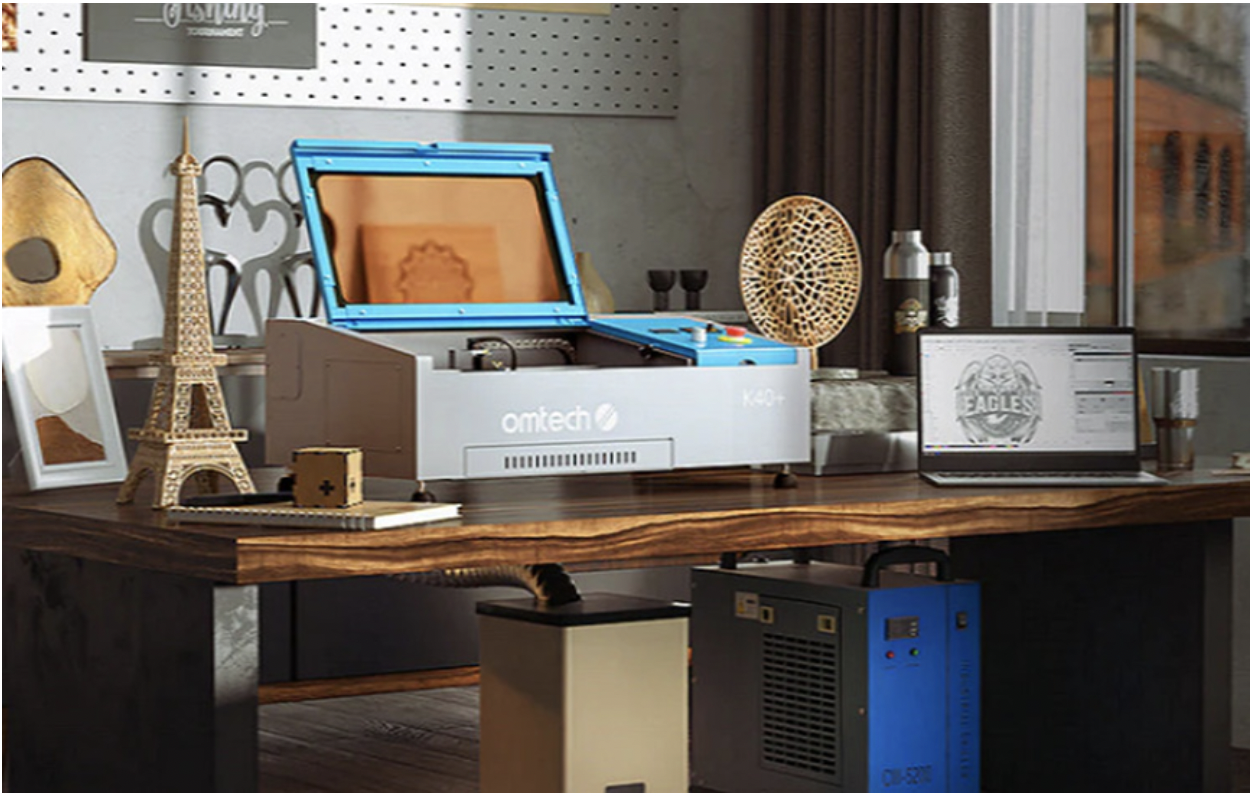
Introduction
Laser cutting technology has revolutionized industries from manufacturing to crafting, offering precise, high-speed cutting for a wide range of materials. When choosing a laser cutting machine, two of the most common options are CO₂ laser cutters and fiber laser cutters. Each has its own strengths and is suited for different applications. If you're wondering which one is best for your needs, this guide will break down the key differences, advantages, and limitations to help you make an informed decision.
Understanding CO₂ Laser Cutters
How They Work
CO₂ laser cutters use a gas mixture—primarily carbon dioxide (CO₂)—as the laser medium. The laser beam is generated when electricity excites the gas molecules, producing infrared light that is reflected through mirrors and directed onto the cutting material.
Key Advantages of CO₂ Laser Cutters
Versatile Material Compatibility – CO₂ lasers excel at cutting non-metal materials such as wood, acrylic, plastic, leather, fabric, and glass.
Superior Edge Quality for Certain Materials – When cutting acrylic, CO₂ lasers create smooth, polished edges, making them the preferred choice for signage and decorative applications.
Lower Initial Investment – CO₂ laser cutters are generally more affordable upfront than fiber lasers, making them attractive for small businesses or hobbyists.
Limitations of CO₂ Laser Cutters
Slower Cutting Speeds on Metals – While some high-power CO₂ lasers can cut thin metals, they are much slower compared to fiber lasers.
Higher Maintenance Requirements – The system relies on mirrors and gas tubes that require periodic maintenance and replacement.
Higher Energy Consumption – CO₂ lasers are less energy-efficient, consuming more power to produce the same level of cutting performance as fiber lasers.
Understanding Fiber Laser Cutters
How They Work
Fiber laser cutters use fiber optics to amplify laser beams, producing a much more concentrated and powerful beam compared to CO₂ lasers. The shorter wavelength (1.06 μm) allows the laser to be efficiently absorbed by metals, making fiber lasers the preferred choice for metal cutting.
Key Advantages of Fiber Laser Cutters
Exceptional Speed and Efficiency – Fiber lasers cut metal significantly faster than CO₂ lasers, increasing productivity and reducing operational costs.
Minimal Maintenance – Unlike CO₂ lasers, fiber lasers do not require mirrors, lenses, or gas refills, reducing downtime and maintenance costs.
Ideal for Cutting Reflective Metals – Fiber lasers can cut aluminum, brass, and copper without the risk of beam reflection, which can damage CO₂ laser components.
Longer Lifespan – Most fiber laser sources last over 100,000 hours, providing long-term reliability.
Limitations of Fiber Laser Cutters
Higher Initial Cost – Fiber lasers have a higher upfront cost, which may not be ideal for small-scale operations.
Limited Non-Metal Cutting – Unlike CO₂ lasers, fiber lasers struggle with materials like wood, acrylic, and glass due to their wavelength characteristics.
Edge Quality Considerations – Some materials may have rougher edges compared to CO₂ laser cutting.
Head-to-Head Comparison
Which One Should You Choose?
Choose a CO₂ Laser Cutter If You:
Work primarily with non-metal materials (wood, acrylic, leather, plastic).
Need polished edges on acrylic or intricate cuts on wood.
Have a limited budget for initial investment.
Choose a Fiber Laser Cutter If You:
Work primarily with metals and need high-speed precision.
Want a low-maintenance, energy-efficient cutting solution.
Need to process reflective metals like aluminum or copper without damaging the machine.
Recommended Laser Machines: OMTech
If you're looking for a reliable and affordable laser machine, OMTech offers a range of high-quality CO₂ and fiber laser machines suited for both hobbyists and professionals. Their CO₂ laser cutters are perfect for engraving and cutting non-metals like wood and acrylic, while their fiber laser models provide powerful, high-speed metal cutting. With a reputation for durability, precision, and excellent customer support, OMTech is a great choice for anyone looking to invest in laser cutting technology.
Conclusion
Both CO₂ and fiber laser cutters are powerful tools, but the right choice depends on your materials, budget, and production needs. If you're working with non-metals like wood or acrylic, a CO₂ laser cutter is the way to go. If you're cutting metals and need high-speed, low-maintenance performance, a fiber laser cutter is the better investment. Carefully assess your business or project requirements before making a purchase. With the right laser cutter, you can enhance efficiency, reduce costs, and expand your capabilities.